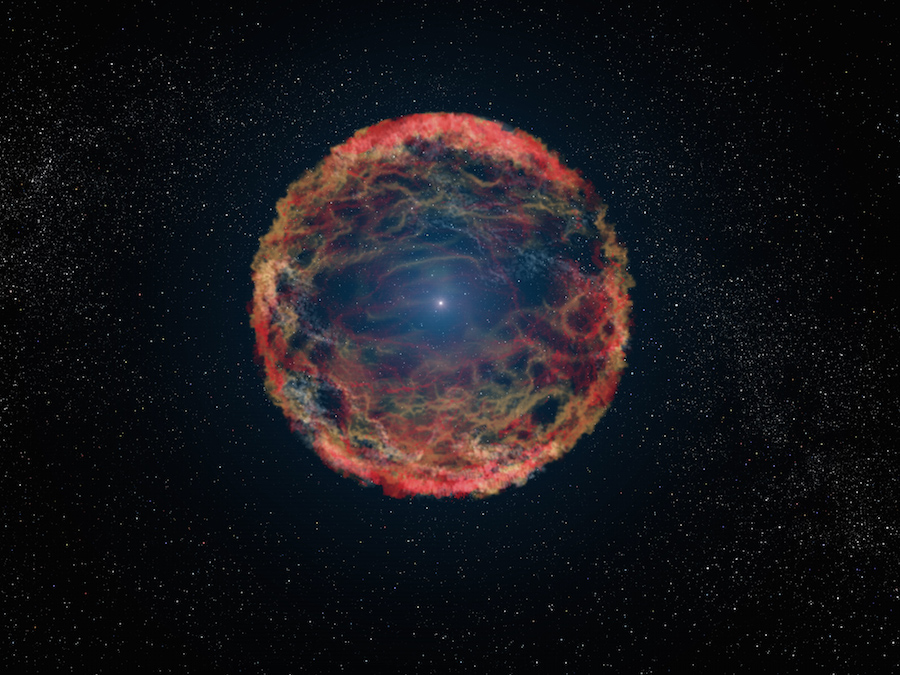
Supernovae, the explosions of stars, have been observed in the thousands and in all cases they marked the death of a star. Astronomers at Las Cumbres Observatory have discovered a remarkable exception — a star that exploded multiple times over a period of more than fifty years. Their observations are challenging existing theories on these cosmic catastrophes.
When the supernova, named iPTF14hls, was discovered in September of 2014 by the Palomar Transient Factory, it looked like an ordinary supernova. Several months later, LCO astronomers noticed something that they had never seen before — the supernova was growing brighter again after it had faded.
A normal supernova rises to peak brightness and fades over approximately 100 days. Supernova iPTF14hls, on the other hand, grew brighter and dimmer at least five times over two years.
When astronomers went back and looked at archival data, they were astonished to find evidence of an explosion in 1954 at the same location. This star somehow survived that explosion and exploded again in 2014.
Iair Arcavi, a NASA Einstein postdoctoral fellow at LCO and the University of California, Santa Barbara, led the study that describes this peculiar event. This work was published in the journal Nature on November 8. Dr. Arcavi said, “This supernova breaks everything we thought we knew about how they work. It’s the biggest puzzle I’ve encountered in almost a decade of studying stellar explosions.”
The study calculated that the star that exploded was at least 50 times more massive than the Sun and probably much larger. Supernova iPTF14hls may have been the most massive stellar explosion ever seen. The size of this explosion could be the reason that our conventional understanding of the death of stars failed to explain this event.
Supernova iPTF14hls may be the first example of a “pulsational pair instability supernova.” This theory holds that massive stars become so hot in their cores that energy is converted into matter and antimatter. This would cause an explosion that blows off the outer layers of the star and leaves the core intact; this process can repeat over decades before the large final explosion and collapse to a black hole.
Andy Howell, leader of the LCO supernova group and a coauthor of the study, said “These explosions were only expected to be seen in the early universe and should be extinct today. This is like finding a dinosaur still alive today. If you found one, you would question whether it truly was a dinosaur.”
Indeed, the “pulsational pair instability” theory may not fully explain all the data obtained for this event. For example, the energy released by the supernova is more than the theory predicts. This supernova may be something completely new.
The supernova group at LCO continues to monitor iPTF14hls, which remains bright three years after it was discovered.
The global telescope network of Las Cumbres Observatory is uniquely designed for this type of continuous observation. LCO has observed this supernova every few days for several years. The long-term consistent monitoring is essential for the study of this very unusual event.
“We could not have kept tabs on iPTF14hls for this long, and collected the data that is now challenging all existing supernova theories, if it weren’t for LCO,” Arcavi added. “I can’t wait to see what we’ll continue to find by looking at the sky in the new ways that only LCO can afford us.”



